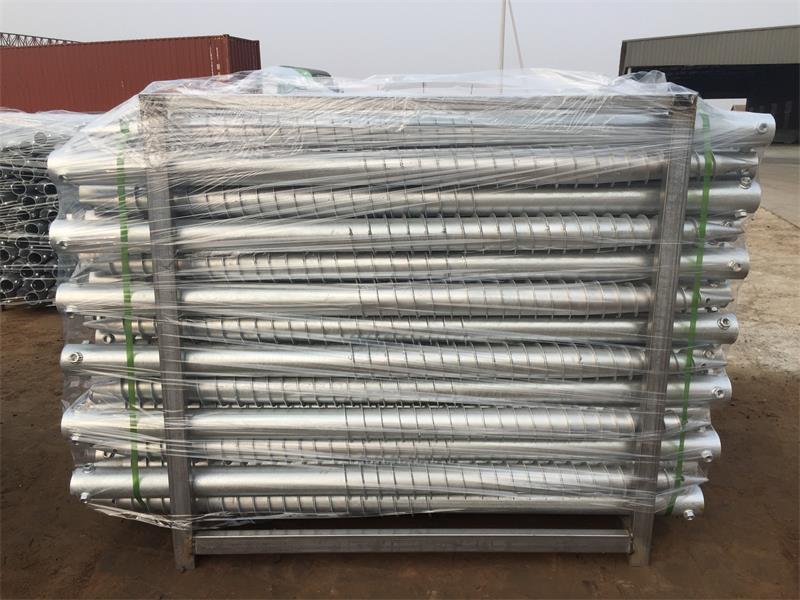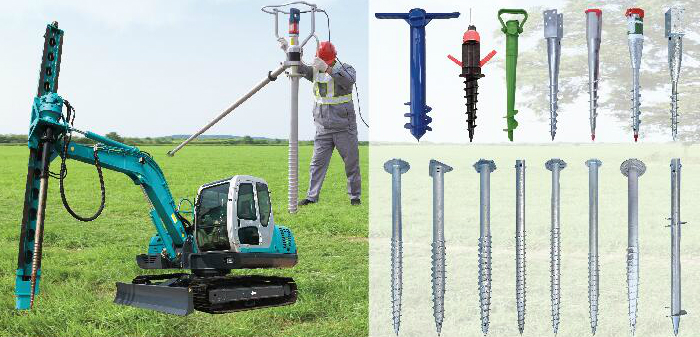Solar Energy System Nut Ground Screw
The hot dip Galvanized Ground Screw foundation for solar energy system , PV Mounting system .Our Ground screw made of Q 235 carbon steel with good quality .
Nut Ground screw with 3 pieces or 6 pieces customed nut to adjust the height of Ground screw for solar panel ,with reinforced plate to install the Ground screw ,it is easy to install ,and no harm to environments ,save time and cost .
with one or two or three big blades ,or continuous small thread . Big blade Nut Ground screw suitable for soft soil condition ,continuous small thread Nut Ground screw suitable for hard or mideum soil condition .They are installed perfectly perpendicular at the exact point within minutes .
Nut Ground screw size some like below : 76*3*1200mm with 3M16,76*3.5*1400mm with 3M16,76*3.5*1600mm with 3M16,76*3.5*2100mm with 3M16 nut .89*3.5*1400mm with 3M16 nut .& .
Advantage : easy install by spiral piling machine , no digging , no concrete , no waiting , much convenient , cost effective , save time , no need concrete foundation , suitable for different soil.
Nut Ground screw can be used in many fields,such as solar energy,petroleum and gas projects,building house,bridge,building temporary container house&


Helical Piers,Ground Screw Piles,Steel Ground Screw,Galvanized Ground Screw
BAODING JIMAOTONG IMPORT AND EXPORT CO., LTD , https://www.chinagroundscrew.com